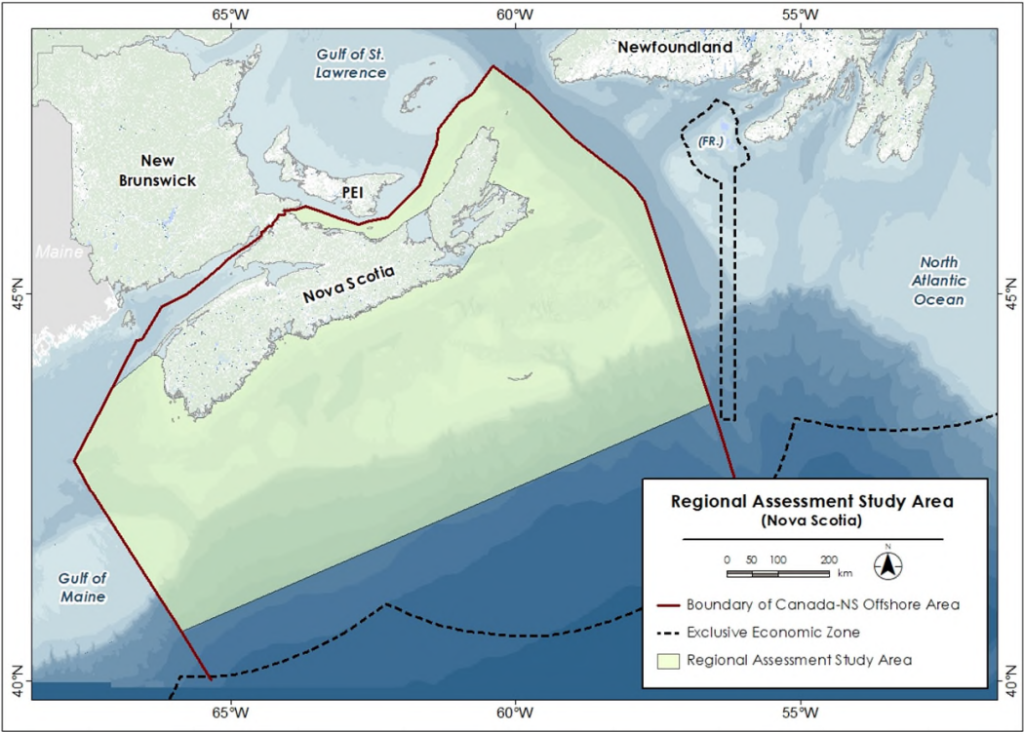An Introduction
The global need to transition from fossil fuels as a primary energy source, towards ‘greener’ renewable energy is ever-increasing and countries around the world have accelerated their efforts, working towards solutions. Canada has set aggressive targets to meet its climate change reduction goals and become a global innovative leader in the development of renewable energies. With the longest coastline in the world (over 200,000 km), Canada is rapidly exploring the untapped potential for marine renewable energy, including offshore wind, tidal, and wave energy conversion. While the marine renewable energy sector is still considered to be in it’s infancy, it’s been estimated that the largest growth for offshore renewable energy (offshore wind turbines) will be off the waters of Nova Scotia and Newfoundland and along the Eastern Seaboard of the US.
Province of Nova Scotia Sets Offshore Wind Targets
Nova Scotia has established aggressive marine renewable energy targets, initially hoping to offer leases for 5GW (gigawatts) of energy by 2030. To put this into perspective, 1GW is enough to power approximately 750,000 homes. Most of the energy generated from offshore wind will be converted into hydrogen to be exported. Two large-scale green hydrogen / ammonia projects have been approved along the Strait of Canso in 2023.
“Leases for offshore wind development will be granted through a competitive bid process jointly
managed by the provincial and federal governments, and the first call for bids will be in 2025.
After reaching the five-gigawatt target, calls for bids will be based on market opportunities.”
– Province of Nova Scotia
May 2023: Nova Scotia’s Draft Offshore Wind Roadmap is released. Read the full Roadmap here
Offshore Wind Projects in Jointly Managed Waters to be Regulated First
Natural Resources and Renewable – November 22, 2023
The Province has decided to focus first on building the regulatory framework for offshore wind energy development in areas jointly managed with the federal government before considering waters under solely provincial jurisdiction.
“Offshore wind is an important part of our clean energy plan, and we are working with our federal partners to ensure a clear path for sustainable development of this new sector,” said Tory Rushton, Minister of Natural Resources and Renewables. “We’re pausing any consideration of waters within provincial jurisdiction until the framework for jointly managed offshore areas is in place. The regional assessment that’s ongoing will help inform our decisions for the regulatory framework for both areas, and I encourage Nova Scotians to continue participating and sharing their input. Our decision to focus on jointly managed waters first reflects that we are listening to the feedback through this process.”
In June, the Department released the first module of the Offshore Wind Roadmap, which set Nova Scotia’s vision for offshore wind and outlined the regulatory path for businesses to invest in projects. It also stated that the Province would consider whether to pursue projects in waters under provincial jurisdiction. The second module of the road map will be released in the spring and will reflect the focus on developing one clear regulatory regime for jointly managed waters first in consultation with all interested parties.
The full press release can be read here.
Regional Assessment for Offshore Wind in Nova Scotia
Before any offshore wind development can proceed, a Regional Assessment (RA) administered by the Impact Assessment Agency of Canada (IAAC) needs to be conducted. An RA is conducted in area(s) of existing projects or anticipated development to inform planning and management of cumulative effects and inform project impact assessments. Coldwater Lobster Association is an active participant in the RA process representing the commercial fishing industry and will assist with mapping fishing areas that fall within the study area and providing expert knowledge on Lobster and other fish species, currents etc.
Regional Assessment Study Area Map (Nova Scotia)

Regional Assessment Timeline

Regional Assessment Committee for Nova Scotia
In March of 2023, the Province appointed five members to the Regional Assessment Committee for Offshore Wind in Nova Scotia. The purpose of the committee is to conduct a Regional Assessment (RA) in accordance with the Impact Assessment Agency, the Agreement, and the published Terms of Reference. Full biographies on the appointed RA Committee members can be found here. To view or download the Agreement and RA Terms of Reference, please click here: DOWNLOAD: Agreement & Terms of Reference
Announcements and Significant Events
- April 5 and 11, 2022: Announcements by Canada and Newfoundland and Labrador and Nova Scotia of intent to expand the mandate of the offshore boards to offshore renewables.
- April 5, 2022: Announcement by Environment and Climate Change Canada to proceed with a Regional Assessment (RA) of offshore wind development for Nova Scotia and Newfoundland and Labrador.
- September 20, 2022: Announcement by Nova Scotia setting a target to offer leases for 5 gigawatts of offshore wind by 2030 to support its budding green hydrogen industry.
- March 23, 2023: Regional Assessments launched (in NS and in NL).
- November 22, 2023: Nova Scotia Government retreats on plan to fast track wind farms. The full press release can be read here.
Quick Facts
- Hydrogen is a gas that is produced by splitting water molecules into hydrogen and water. When hydrogen is produced using a renewable electricity such as wind power, it is referred to as ‘green hydrogen’.
- Offshore wind projects will be administered by the current offshore petroleum regulator whose mandate will be expanded and name changed to the Canada-Nova Scotia Offshore Energy Board.
- In the last decade, offshore wind development has grown substantially. Initially, this growth was driven by the Northern European markets, but China has since shown the fastest growth (AEGIR 2023).
- The Province of Nova Scotia has also set targets to achieve 80% renewable energy by 2030 and net-zero emissions by 2050.

